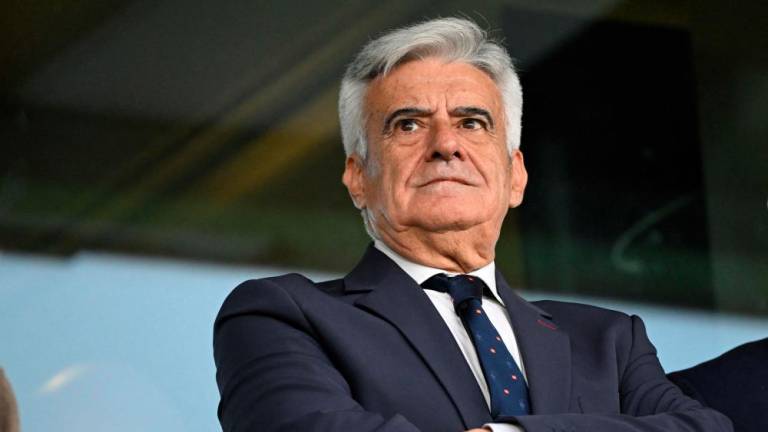DOES President Xi Jinping’s US$1 trillion-plus Belt and Road Initiative (BRI) to build highways, railways and ports in Asia and Africa make China the world’s loan shark? If implemented globally and successfully, will this mega-infrastructure building project mean Beijing has got the world by the throat?
These two jaundiced headlines were for the same article written by Mihir Swarup Sharma recently and published separately by the Observer Research Foundation and Bloomberg respectively.
Citing a study by the Kiel Institute for the World Economy, Sharma claims Chinese loans – especially for building infrastructure – carry fairly high rates of interest and the assets built often don’t earn enough to pay back the loans. Some countries could end up mired in debt, borrowing more from the Chinese than they can possibly repay, he writes.
Another criticism is China’s loans are disbursed directly to Chinese contractors – instead of being sent to the country where the intended infrastructure will be located.
Although these loans are usually secured against public-sector or commodity revenues, their terms are rarely made public, Kiel researchers say. “Worse, it looks like Chinese capital flows disproportionately to the poorest countries; to those in crisis, such as Zimbabwe and Iran; and to oil exports such as Angola or Venezuela,” Sharma points out.
BRI isn’t the Marshall Plan, Sharma asserts.
I have several comments about Sharma’s article.
First, given the issue involves China’s loans to poor countries, Sharma’s article is remarkable for its near-total absence of figures. For example, he doesn’t disclose the “fairly high interest rates” that Chinese loans carry, especially for building infrastructure.
According to Sharma, Kiel researchers found that “... half of all foreign debt to Chinese state-run banks and institutions is ‘hidden’ from normal databases. Consequently, “debt levels and the debt service burdens in two dozen developing countries are much higher than previously thought.”
Additionally, no numbers are given for the value of foreign debt owed to China’s state-run banks and the much higher debt service burdens incurred by two dozen developing countries.
A recent article in the Irish Examiner, citing data from the Kiel study, offers a less pejorative view of China’s lending to poor countries.
“For 50 developing countries indebted to China, that debt has increased on average from less than 1% of their gross domestic product (GDP) to more than 15% in 2017” the Irish Examiner notes, citing data from Germany’s think tank, the Kiel Institute. GDP is the monetary value of all goods and services produced within a country during the year.
Over the past 17 years, Angola, with US$42.8 billion in borrowings, was the top recipient of China’s loans, followed by Ethiopia (US$13.7 billion), Kenya (US$9.8 billion) and the Republic of Congo (US$7.4 billion), the Irish Examiner says.
While China’s BRI lending appears gargantuan, this is dwarfed by poor countries’ massive infrastructure needs.
Writing in The Washington Post, Jonathan Hillman says Asian Development Bank estimates Asia requires US$26 trillion for infrastructure by 2030 to maintain its growth and adapt to climate change.
Acknowledging these loans finance projects that are often undertaken by Chinese companies, the Irish Examiner wryly describes this linkage as “circular self-perpetuating capitalism at its ensnaring best”.
Second, if BRI loans carry fairly high interest rates, this is because many borrowers are high risk.
Third, because commercial banks and multilateral lending institutions aren’t rushing to lend money to these borrowers, China is filling a lacuna in global lending.
Since achieving independence, these African countries have “struggled to secure loans from former colonial masters, World Bank or the International Monetary Fund. China saw the opportunity and filled the vacuum,” the Irish Examiner says.
Fourth, and most remarkable, is Sharma’s suggestion that the West should step up its lending to poor countries.
Sharma’s suggestion is a non-starter. It was the failure of the West to finance much of the infrastructure needs of poor or high-risk countries that have enabled China to build infrastructure financed by loans for African and Asian countries.
Fifth, some commentators are misguided in believing the BRI was solely motivated by Beijing’s global military designs.
“China’s efforts to build ports around the world aren’t because they want to be great shipbuilders and stewards of waterways, but rather they have a state national security element to each and every one of them,” US Secretary of State Mike Pompeo warned.
No doubt, infrastructure can serve both commercial and military purposes, Hillman suggests a dollars-and sense rationale for BRI.
“Ultimately, China’s desire to find new markets for its bloated state-owned enterprises is a strong motivating force than the quest for military power.
“China is home to seven of the world’s 10 largest construction companies and used more cement between 2011 and 2013 than the United States did during the entire 20th century,” Hillman points out.
Ultimately, it is dollars that is the primary and overriding motivation for China’s BRI.
Opinions expressed in this article are the personal views of the writer and should not be attributed to any organisation she is connected with. She can be contacted at siokchoo@thesundaily.com











